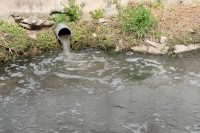EPA Releases Final Risk Determination for Diisononyl Phthalate (DINP)
On January 14, 2025, the EPA released the final risk evaluation for diisononyl phthalate (DINP), which was conducted under the Toxic Substances Control Act (TSCA). The EPA concluded that DINP presents an unreasonable risk of injury to human health because workers could be exposed to high concentrations of DINP in mist when spraying adhesive, sealant, […]










